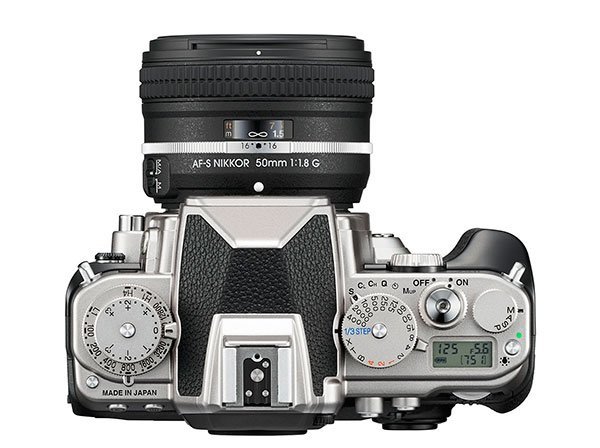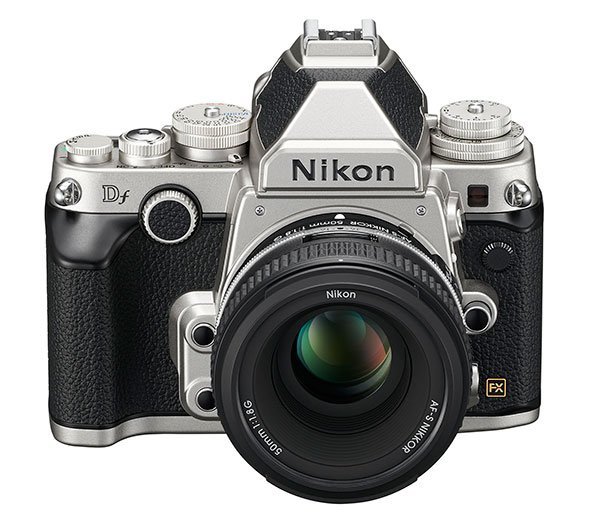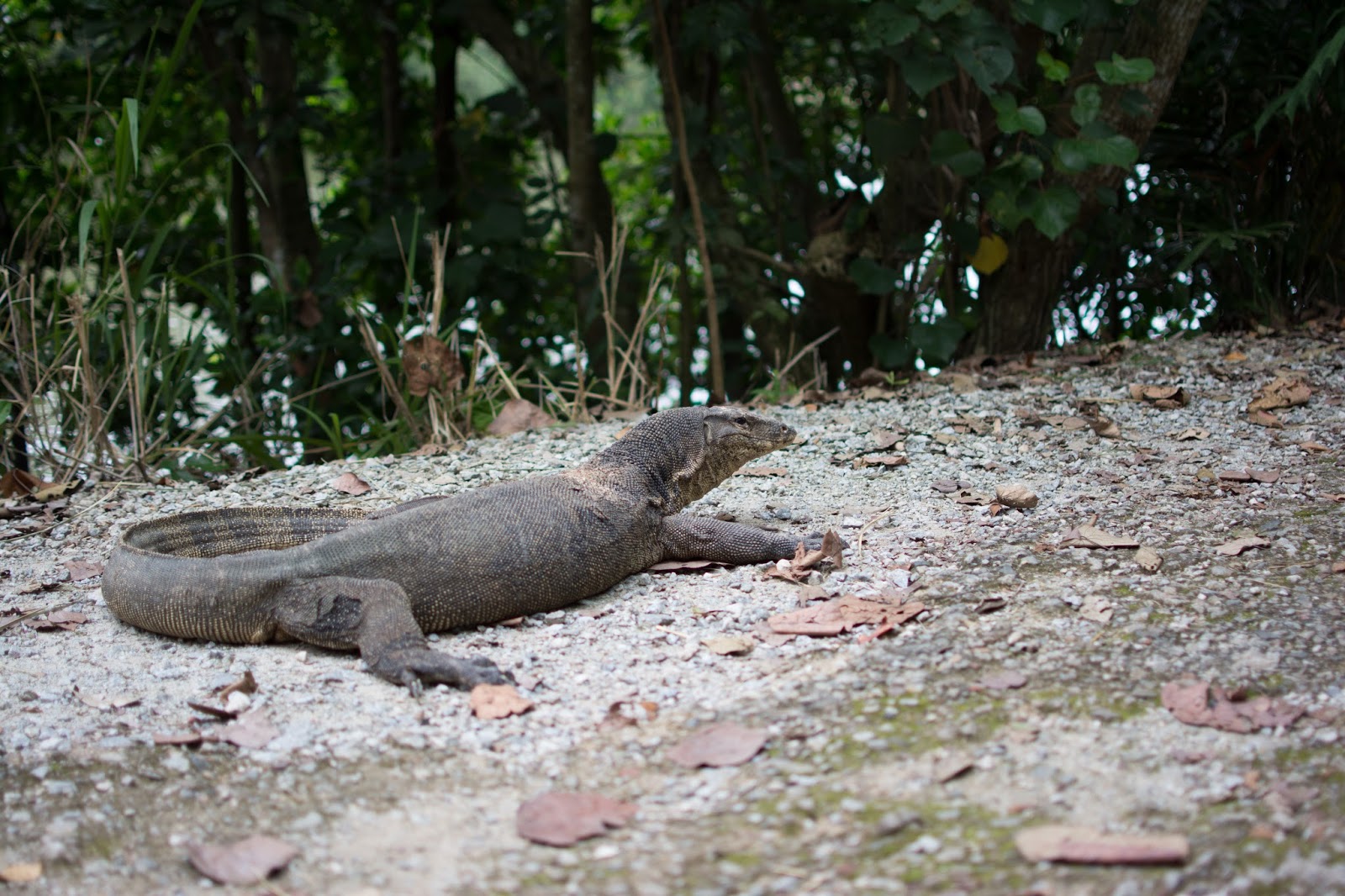This is the Nikon Df. Announced on 5 November 2013, this debut design took three years to develop. Its name, short for Digital Fusion, represents its fusion of "D4 image quality and lightweight mobility". Behind this, though, its true intention and appeal also lies in mimicking the design of the film camera Nikon FM2, thus achieving a fusion of old familiarity and fresh technology. It comes with a specially designed Nikkor 50mm f/1.8G lens to match the body.
The essence of what's in this body: the same 16 MP full frame sensor as the D4, the same 39-point AF system (MultiCam 4800) as the D610/D600, and an EXPEED 3 processor. And in the name of pure photography, there is no video on this camera. It is the only digital body that is compatible with non-AI lenses, due to a foldable coupling lever design.
Seeing the sudden uproar over this camera - I've seen one by Fstoppers, one by DigitalRevTV - and I thought it's a good time I share my opinions too.
Rants, rants, rants.
I was actually quite appalled to hear that Nikon took three years to develop this camera. You might have noticed that this camera is essentially just a recombination of existing camera parts encased in a new body. It's like how McDonald's decided to replace the sausage patty in the McMuffin with that from a McChicken, and launch a whole new breakfast menu item called the Chicken McMuffin. Similarly Nikon grabbed the sensor of the D4, the AF system of a D600, and threw them together into a retro-looking body. That surely wouldn't have taken three years?
Furthermore Nikon has been pretty boring recently. The last major excitement was perhaps the D7000 in 2010, and the D4 and D800 in 2012 (the D600 honestly was no excitement at all), and I highly doubt the fast rolling D3000 series and D5000 series are worth much notice to serious photographers. The Df, everyone thought, could be the next big thing for Nikon. It was, but in a wrong way, for the main attractive thing of this body was the esthetics.
I was also disappointed that Nikon removed the video mode, because even though in the name of "Pure Photography" video should be unimportant, it's always a win to have this feature at hand. Furthermore, how much space (and cost) did Nikon actually save on this body by removing a built-in microphone and a few extra ports?
Of course, I could dig into details, like the lack of a built in viewfinder cover (and how much space did that save?) or the combined card and battery slot, or the weird front wheel design, but there's really more important things to get agitated over.
But it's not so bad.
Now let's not thrash this camera flat to the ground, shall we?
Nikon marketed this camera as a lightweight camera with D4 image quality. At less than half the price of the D4, it seems like a good choice to get a pro sensor. But unless you're really seeking the identical D4 sensor, it would perhaps make more sense to throw in a few more bucks and get a D800, with a better AF system. Of course, make sure the vast 36 megapixels won't bother you.
Many reviews criticize the controls on this camera. For this, I shall compare, like all others, to another retro-style digital camera that has garnered loads of positive reviews and thumbs-ups from pros, and has also been termed unofficially the "new Leica" or the "poor man's Leica": the Fujifilm X100s. For the sake of this comparison, let's just focus on the top panel controls.
 |
| Top panel of the Fujifilm X100s. |
The X100s features a shutter speed dial, an exposure compensation dial, and an aperture ring. It did away with the mode dial; how I go about using different modes is via the Auto setting on both the aperture ring and the shutter speed dial. Whichever setting I would like to have adjusted for me using metering, I will turn it to Auto. Very intuitive, yes?
 |
| Top panel of the Nikon Df. |
On the Df, the same dials exist on the camera, plus an ISO dial (this is inconsequential). And there's a small mode dial retained at the corner. This I do not mind, even though it may be confusing say looking at your shutter speed dial and forgetting that you're on aperture priority. But the complaint for this is that the dial is designed such that you have to lift the dial to turn it. And that, while preventing any accidental mode changes, is exceptionally hard to use. Bad move, Nikon. You could have used Fujifilm's ingenious method (though of course on the Nikon there's no aperture ring because that depends on the lens), or use a button+dial method like on pro bodies like the D800 and D4.
Then let's bring our attention to the one-third stop option on the Df shutter speed dial. You would observe that all the shutter speeds available on the dial are, as expected, in full stops. By selecting the one-third stop option, you are essentially back to normal DSLR operations, meaning using the back wheel to change shutter speed. On the X100s, though, for every shutter speed you select on the shutter speed dial, you can fine-tune it with the back wheel (which isn't really a wheel though). For the sake of using the camera retro-style, the X100s design definitely wins, but for practicality, it would vary from person to person. I would personally prefer the Df design, as I have the convenient option to revert back to my typical DSLR controls when I feel like it.
I've touched the Df a few times, and compared to the feeling of a retro compact X100s and a typical bulky DSLR, I can't really tell where the Df stands. Its grip denies me gripping the camera the X100s or the Nikon FM2 way, because the small bulge is obstructive. Yet when I grip it the DSLR way, it doesn't feel really safe either. But no doubt this camera is heavy and really quite big, a bit too big to be disguised as a Nikon FM2 equivalent. Though that's inconsequential. And overall it's still a decent design, just one you need to get used to.
A photographer I met in a park was actually using the Df. I asked him why. He said it renders colors better than other cameras. He owns a D4 as well, so I assume this means there is a difference. It's just like how D7100 and D5300 both runs on similar sensors and processors, but I trust the D7100 would beat the D5300 in the images it produces. In other words, it won't be the same EXPEED 3 in two different models. However I've not seen anyone else mention this benefit of the Df.
The lens is as modern as ever.
It's a 50mm f/1.8G. Don't get fooled, the aperture ring is fake. I think Nikon chose the f/1.8G lens because it after all has a balance between good optical design and price. I would have expected the f/1.8D because of the aperture ring, but this camera is pretty automated that the D would just become a G. And the f/1.8G has better optical design. And why not an f/1.4 lens? Because a so-called kit lens should not get too expensive, right? And Nikon probably thinks more expensive lens are not worth giving a new design, as fewer people will choose to buy them.
But I will personally buy the body only and get a 50mm f/1.8D, just for the fun of it!
Verdict?
I would recommend the Df to the following people:
- Those who really badly want a retro-style Nikon DSLR or something cool of that sort, and have the money to burn
- Those who really badly want a D4 but can't afford one
- Those who still have a good collection of ancient non-AI lens, and really badly want to use them on digital instead of selling them off
I don't think this camera is worth consideration unless you have very specific needs like those above. My attitude isn't as sarcastic as say that of Fstoppers or DRTV, but the consensus is this: this camera does not come cheap especially for what you are getting. I do not know whether Nikon will leave this camera as a standalone or continue it as a series (Df2? Dfs? Dfx?), but if any rumors of continuation were to leak out, I would wait for the upgrades. Who doesn't love a cool retro body? But I'd want to make sure what I get inside is worth as much as the classy casing. And the current Df has not convinced me that it's worth the cash more than a D800.
Some said that perhaps if you throw in a DX sensor and market it as an entry level camera, it would have been more well received. It does makes sense, like how Canon and Nikon are both coming out with colorful cameras (some of which look quite disgusting frankly). But simply with a cheaper sensor, how much cheaper can this camera be? The X100s is priced high enough to repel entry level consumers and appeal to the pros. Furthermore, full Auto and Guide modes are popular amongst consumers; those complicated dials will be redundant and certainly will scare some away. Perhaps they can retain the rough looks, but the "pure photography" elements must go away or be disguised if this were an entry level camera.
If Nikon improves on the Df, perhaps I would consider it for my FX upgrade. Otherwise, I'd stick to X100s as my dream retro camera. Or play with an actual FM2 for one-tenth the price.














